Our Bordeaux Adventure – Part Un
Posted on October 5,2024 By John Compisi
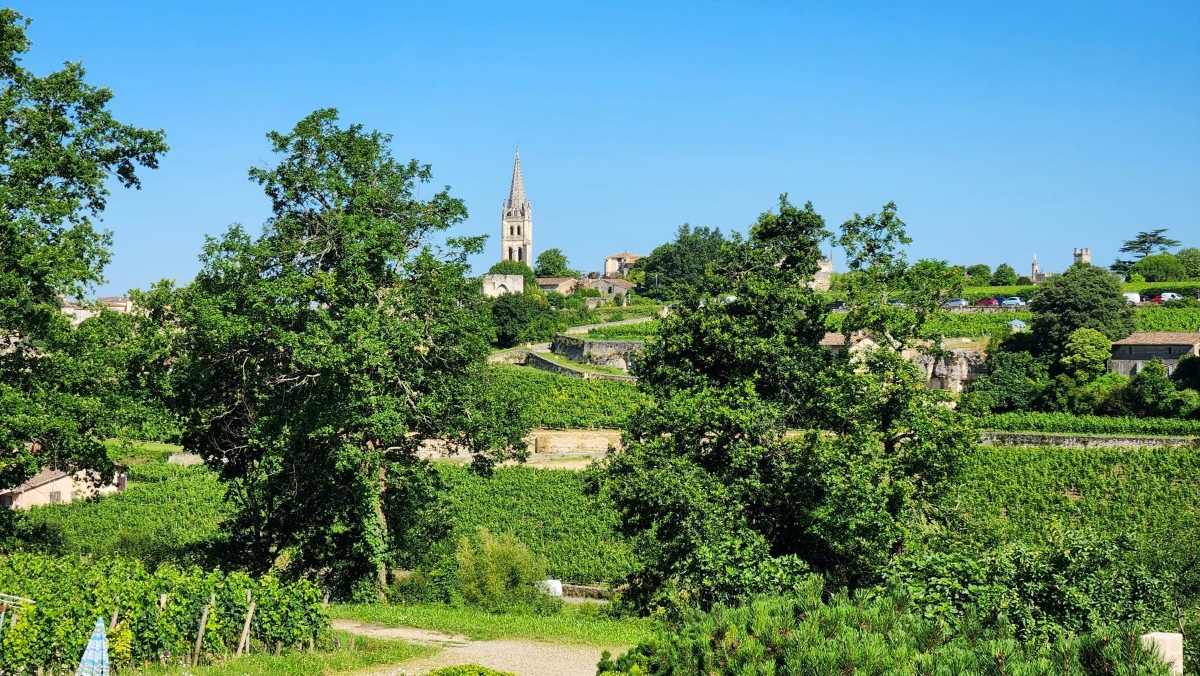
After three wonderful days in Paris and Champagne, we checked out of our hotel and made our way to Gare Montparnasse train station just a block away. We booked second class for €76 per person, each way. The train ride to Bordeaux lasted about 2.5 hours and offered views of the Loire Valley and Nouvelle Aquitaine.
Before seeing the vines of Bordeaux, we were taken by the miles and miles of non-vineyard agriculture that blanketed the terrain on either side of the railroad tracks.
We were heading to Bordeaux to join a group of 20 other members of the Clarice Wine Company of Sonoma County, California. Arriving around 1pm, we took an Uber to the Hôtel Majestic. The Hôtel Majestic is in a great location in the historic center of Bordeaux, convenient to the Garonne riverfront, the main pedestrian shopping street, the Grand Theater and many excellent restaurants.

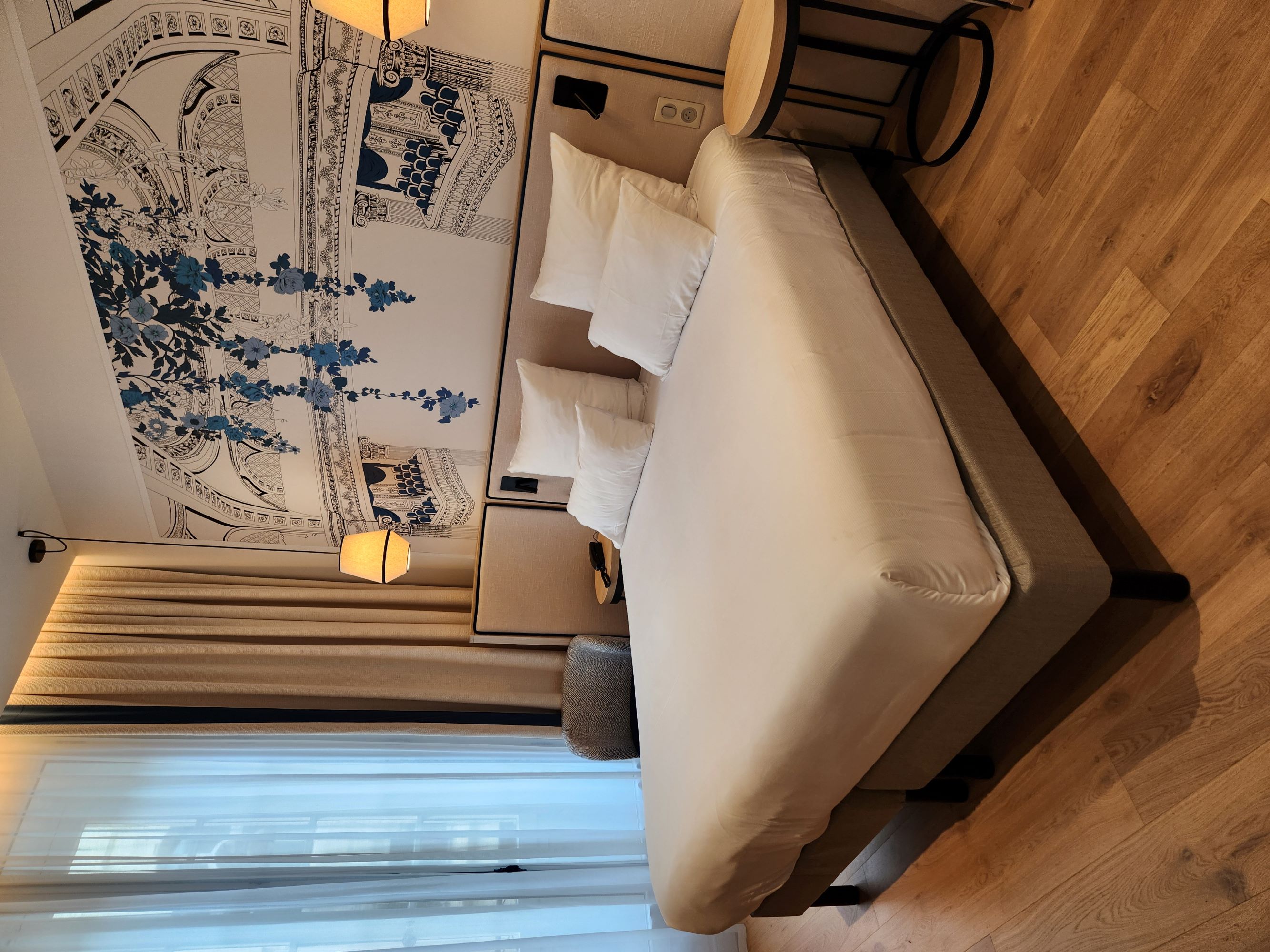
After checking in to our hotel and freshening up, we took a stroll down one of the major pedestrian shopping areas.
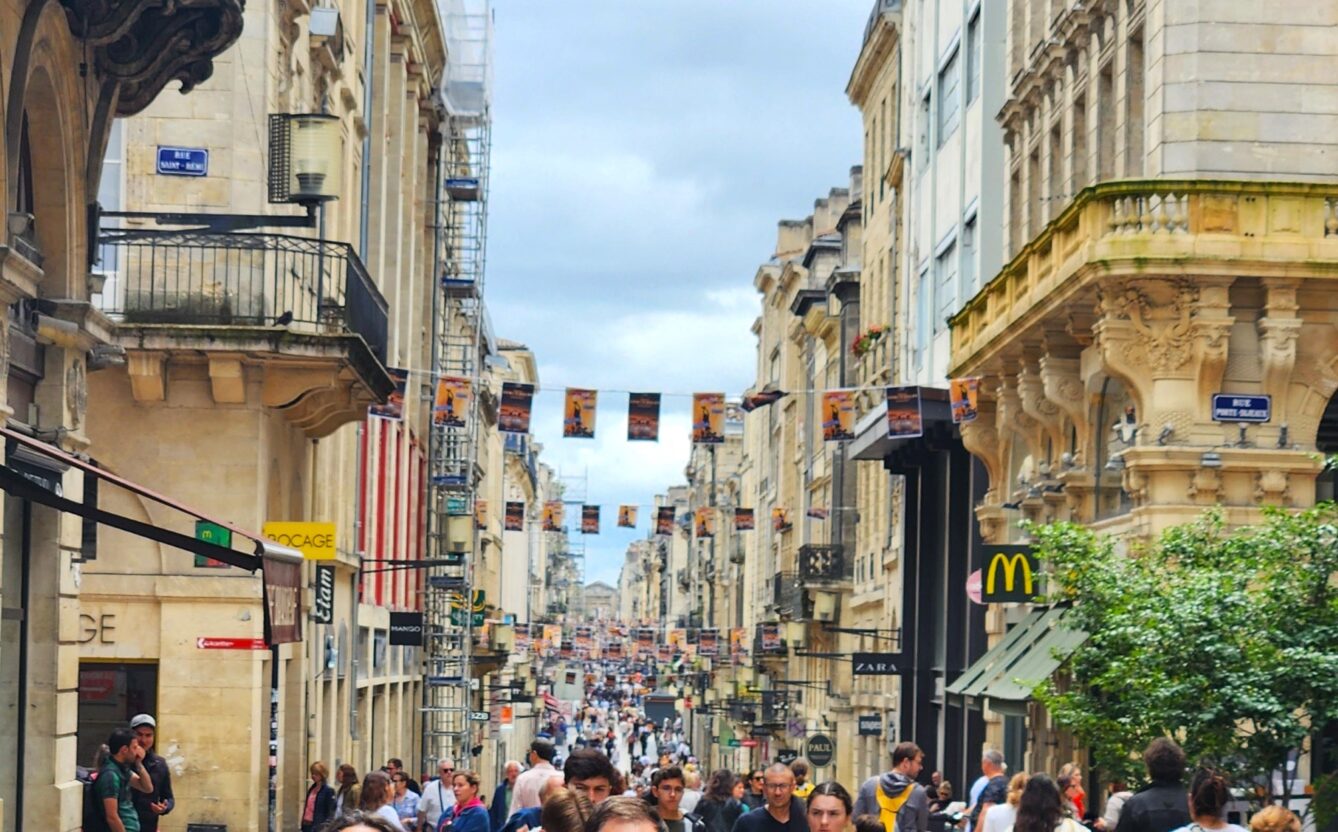
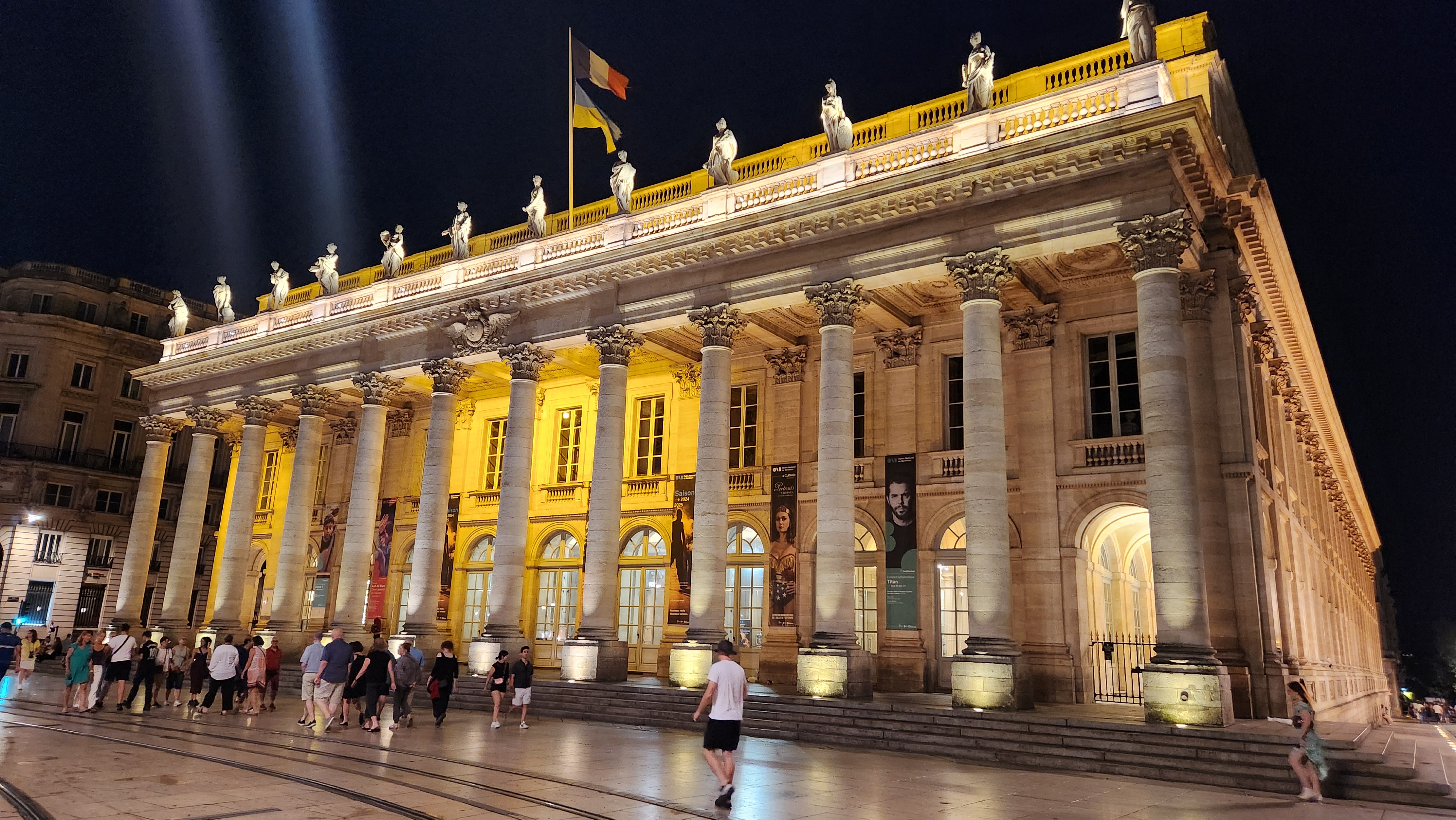
For the record, this tour was not for the faint of heart. From Monday through Thursday, we visited 15 different chateaux and sampled numerous other French wines at a variety of meals. On the other hand, visiting a wine region in Europe with a local guide and two American winemakers (Adam Lee and Morét Brealynn) in the lead, offered credibility and gusto to the Chateaux we visited. Our guide was Kelly McAuliffe, an American who obtained his Sommelier training in France and has lived there for 30 years.
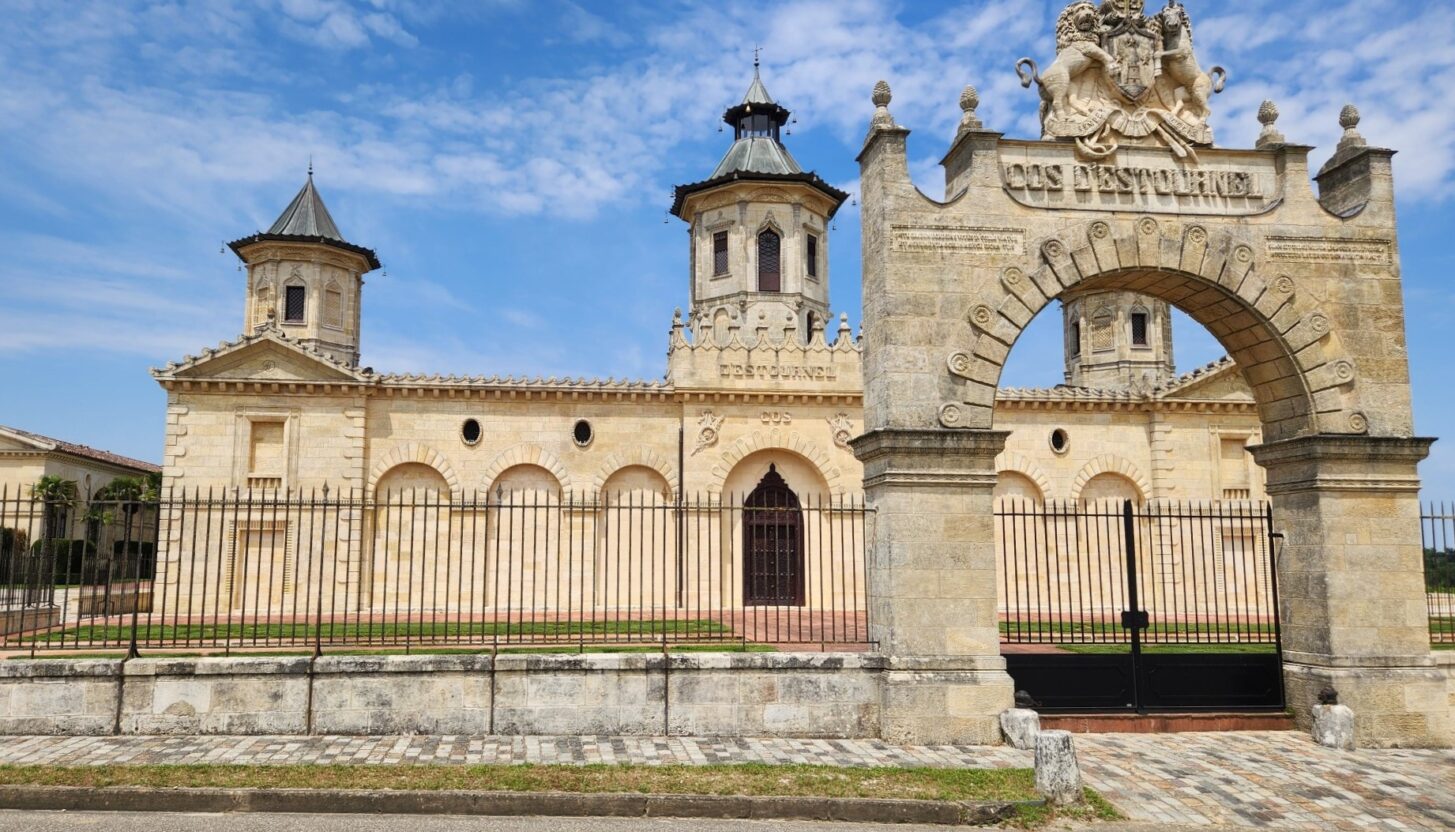
BORDEAUX
The wine region of Bordeaux is divided by the Gironde Estuary (off the Atlantic Ocean) into a Left Bank and a Right Bank area.
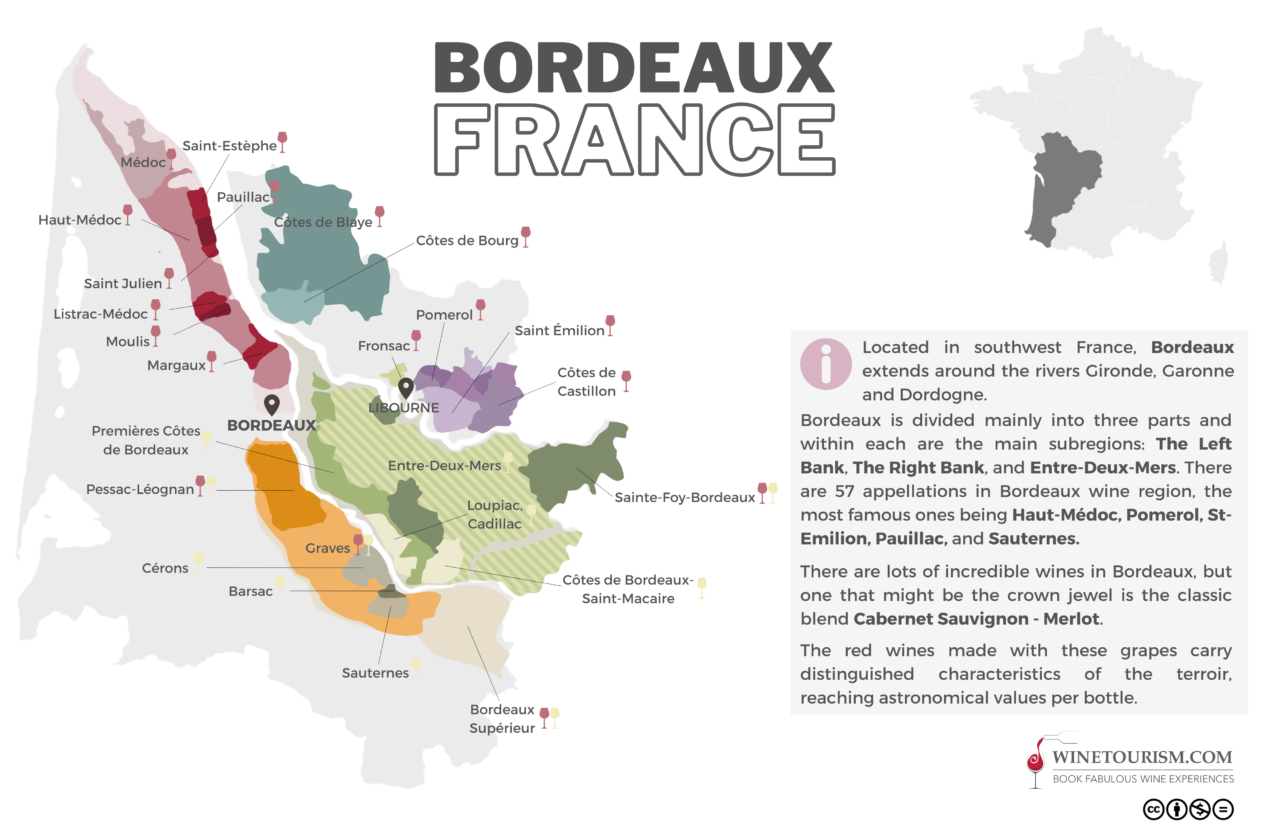
The Left Bank
Left Bank area includes the Médoc and Graves. The Médoc is further divided into Haut-Médoc and Bas-Médoc, referred to as Médoc on the map below. Haut-Médoc includes St-Estèphe, Pauillac, St.-Julien and Margaux and a couple lesser known areas.
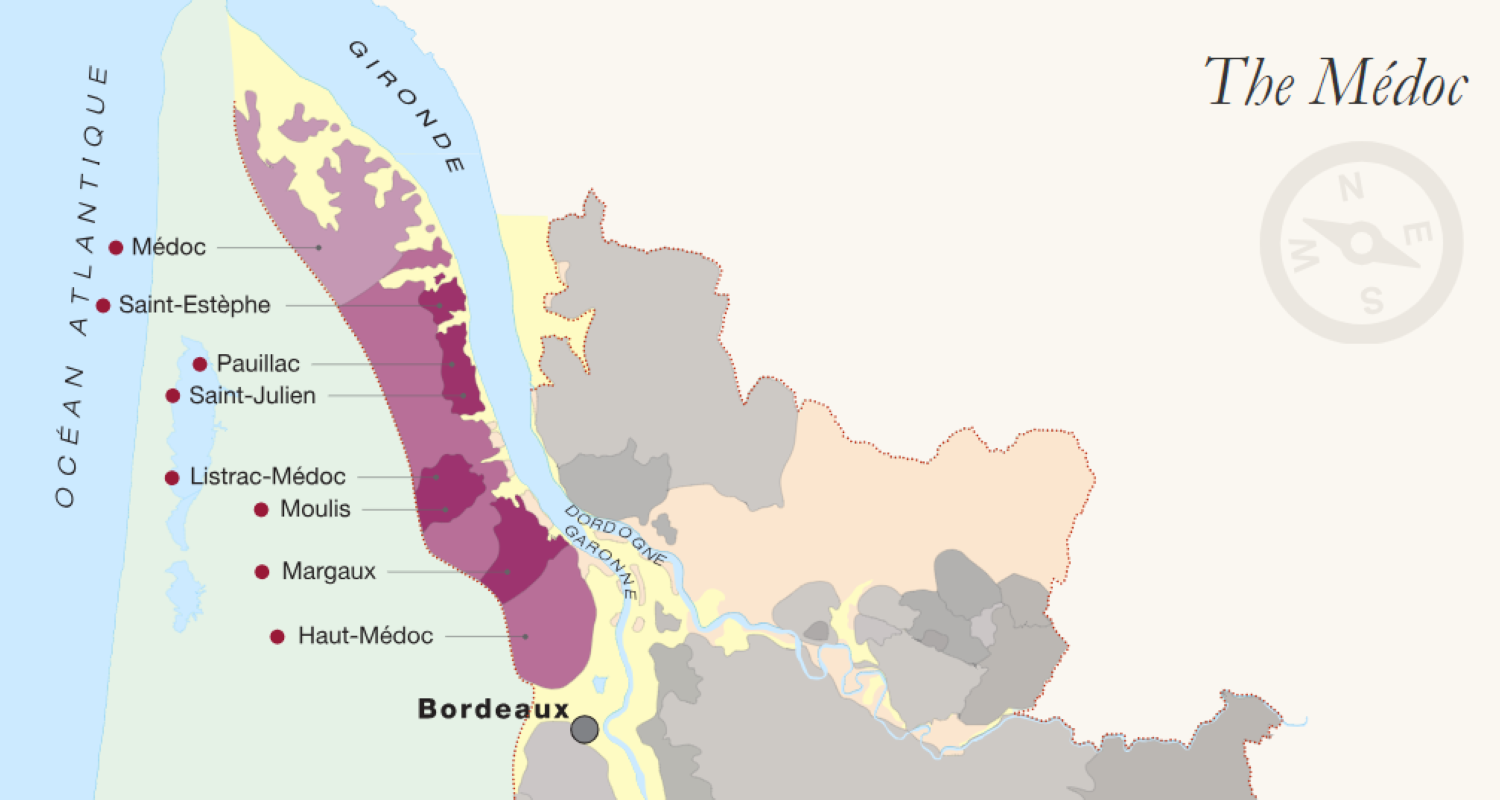
The Graves including the principal sub-regions of Pessac-Léognan and Sauternes, and Sauternes’ sub-region of Barsac.
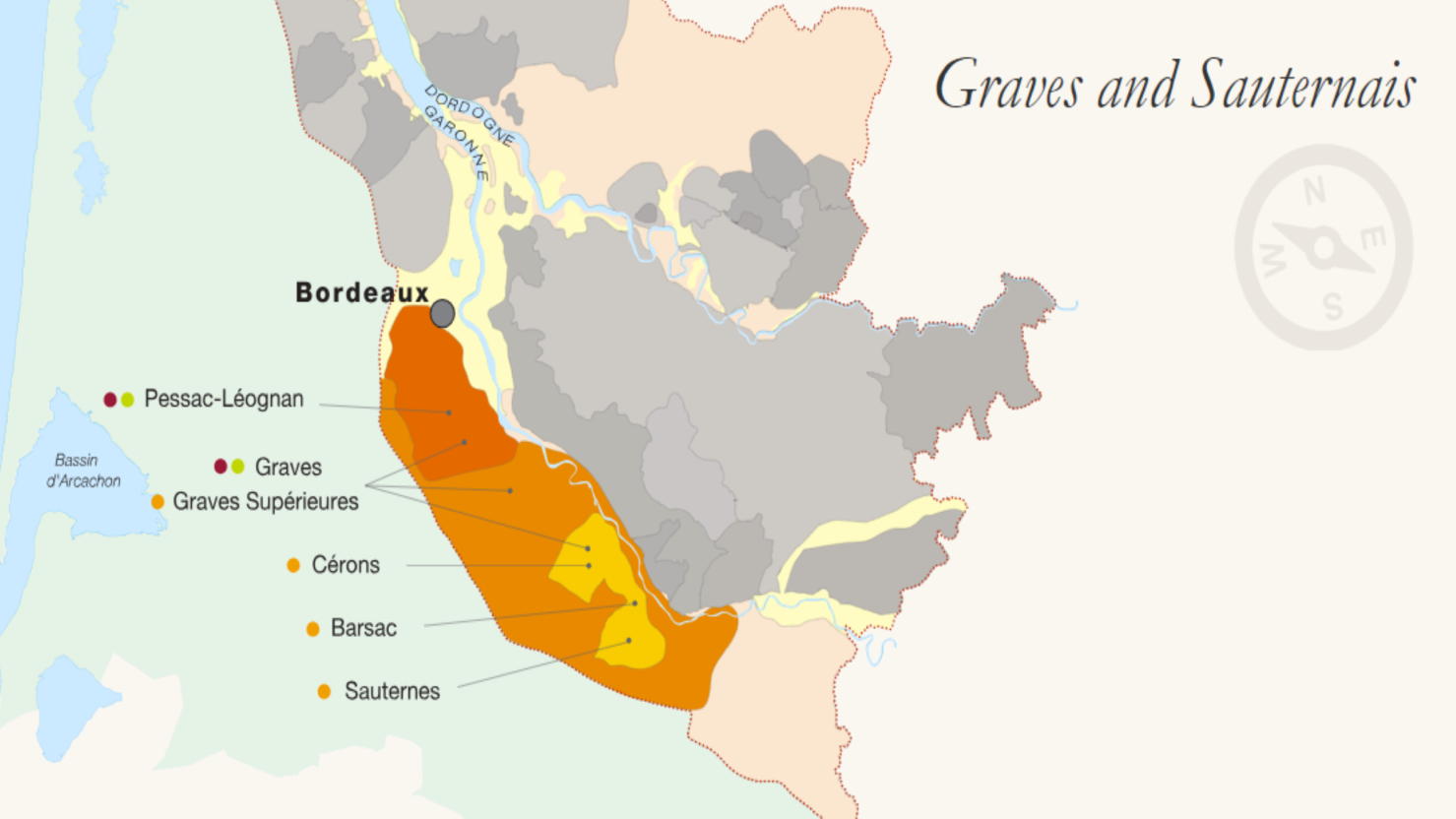
The Right Bank
Right Bank areas include the Libournais, Bourg and Blaye. The Libournais includes the principal sub-regions of Saint-Émilion and Pomerol.
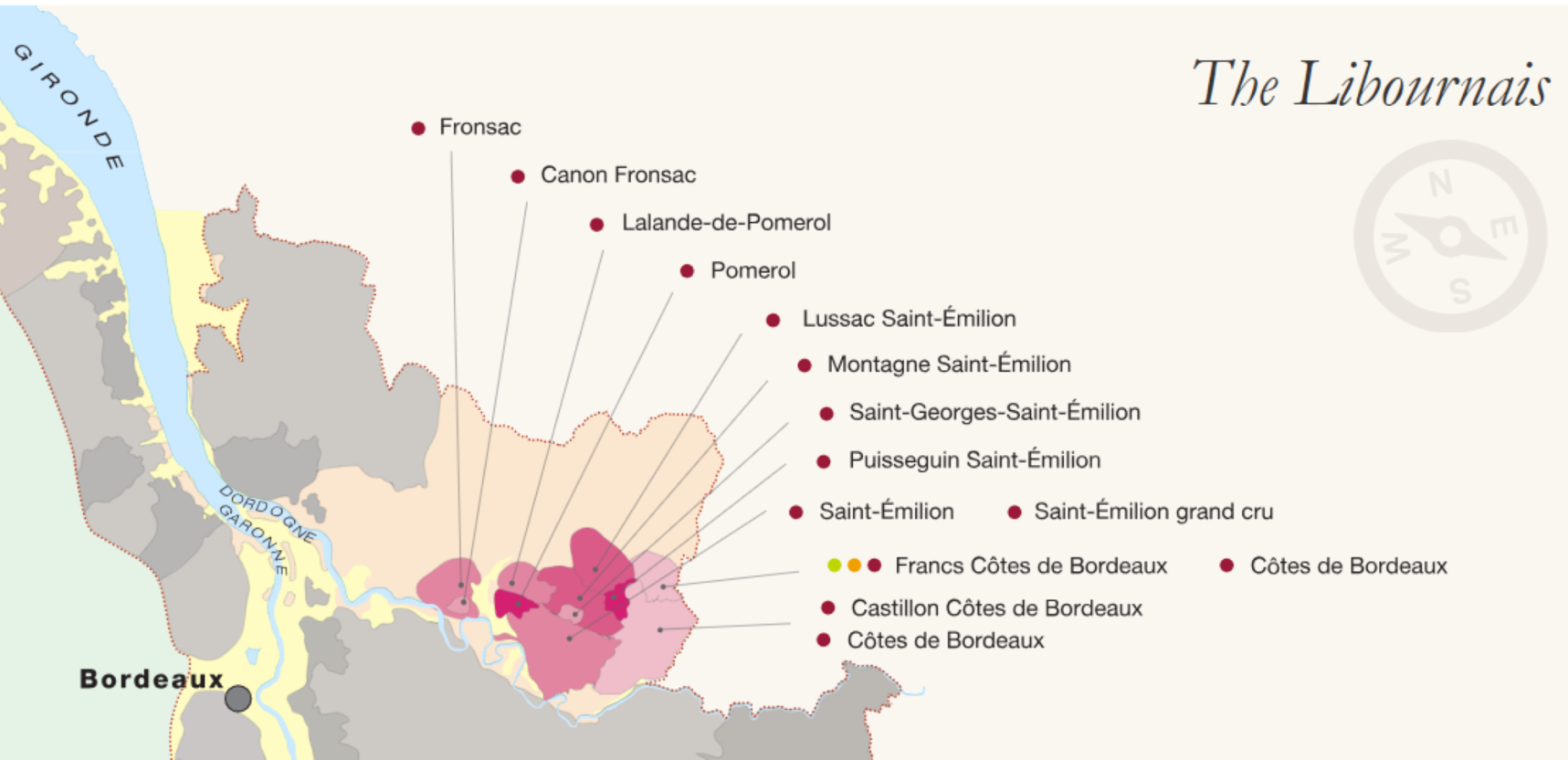


Entre-Deux-Mers
There is an additional wine region, Entre-Deux-Mers, so called because it lies between the Garonne and Dordogne rivers, which combine to form the Gironde. This region contains several less well-known sweet wine areas of Cadillac and St. Croix de Mont.
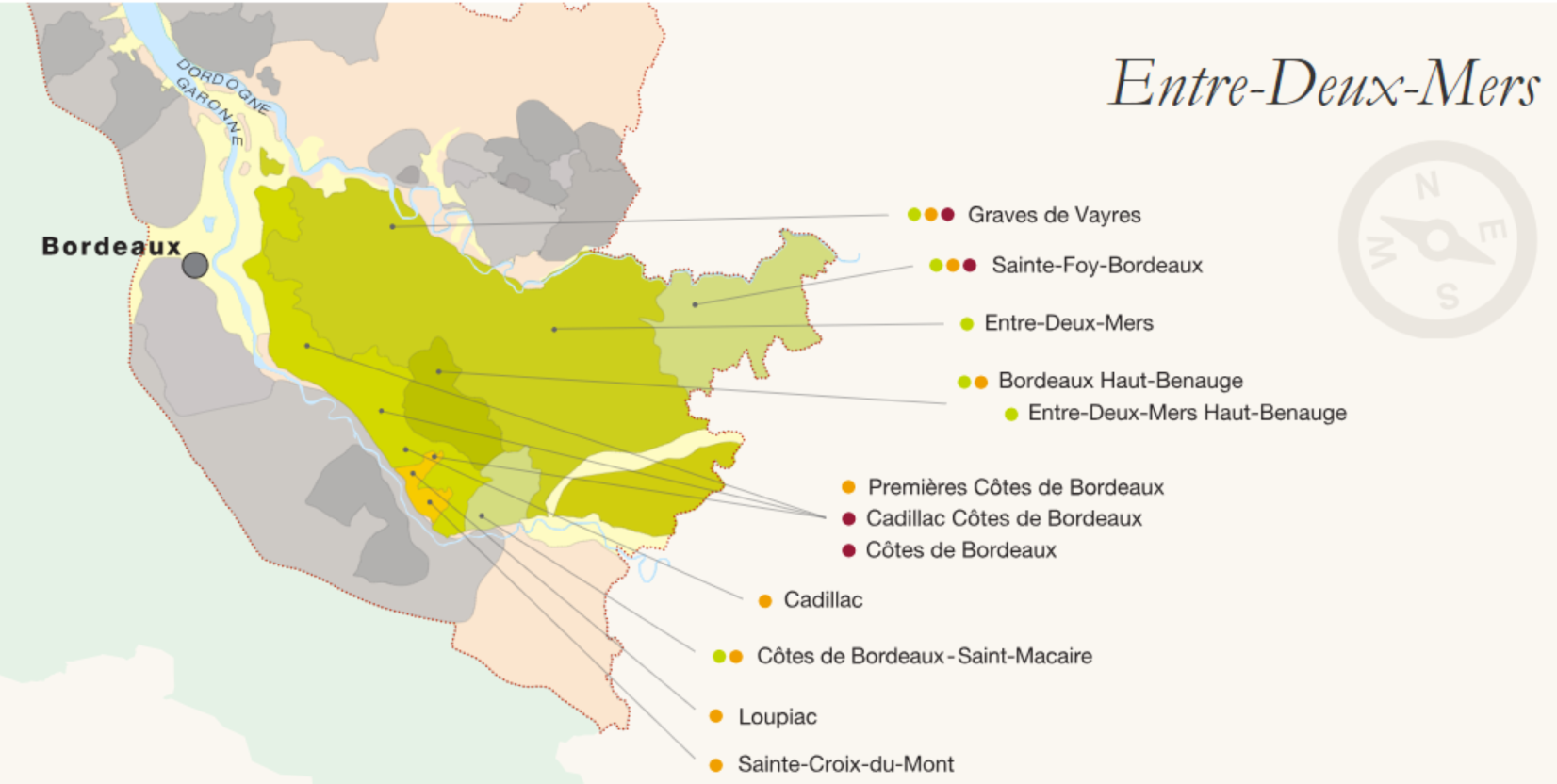
Our welcome dinner at Le 1925, was delightful as we got to know some of the 20 other people in our touring group. The brassiere showed the ambiance reminiscent of the roaring 1920s and the honoring the grand Parisian brasseries that we have experienced in many areas of France.

We enjoyed different regional dishes featuring fresh produce and fresh seafood. Of course, our hosts and guides poured numerous excellent wines from around France.
Day 1 – St. Emilion and Graves
After a typical European breakfast at our hotel, we boarded our coach and headed up the Right Bank for St. Emilion. Our 1st destination was Château Pavie-MacQuin. The Château is in a beautiful setting with vineyards on rolling hills and the charming city of St. Emilion visible from the vineyards. The barrel room was very modern but located in an historic building. We were served the 2010 Premier Grand Cru Classé, a beautiful blend dominated by Merlot (80%) with Cabernet Franc (18%) supporting and some old vine Cabernet at 2%. Quite elegant with significant minerality and very nice structure.

In the late 19th century, the phylloxera epidemic destroyed most of the vineyards for wine grapes in Europe, most notably in France. Château Pavie-MacQuin was owned, at that time, by Albert MacQuin. who became known as a pioneer in the battle against phylloxera, being among the first to graft Vitis vinifera onto American rootstocks. While neighboring Châteaux were still looking for a cure to heal the infected vines, MacQuin set about replanting his entire vineyard with the more resistant rootstock and was able to rebound more quickly from the phylloxera epidemic that plagued the Bordeaux wine industry. The estate is currently owned by the Corre family, descendants of Albert MacQuin.
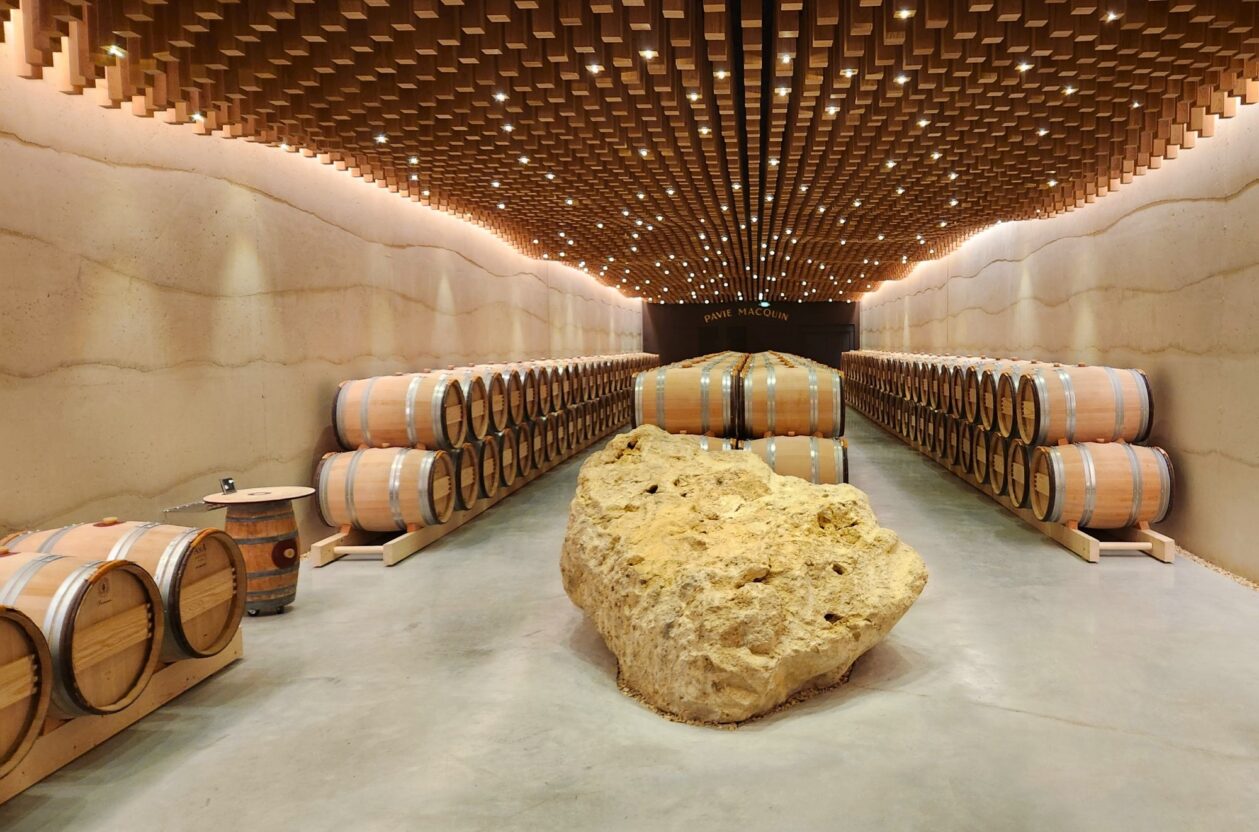
Pavie-MacQuin has had the same winemaker for the past 30 years and, interestingly, in 2006, the Château was promoted from Grands crus classés to Premiers grands crus classés B in the Saint-Émilion wine classification.
Upon departing Pavie-MacQuin, we proceeded to ETS Martin, a well known wineshop, for a private tasting in their underground cellar. The wine cellar was packed with amazing wines like Petrus and Château Margaux. ETS Martin specializes in the wines of Bordeaux but has more than 1800 wines including the best of Burgundy, the Rhône, Champagne and the Loire.
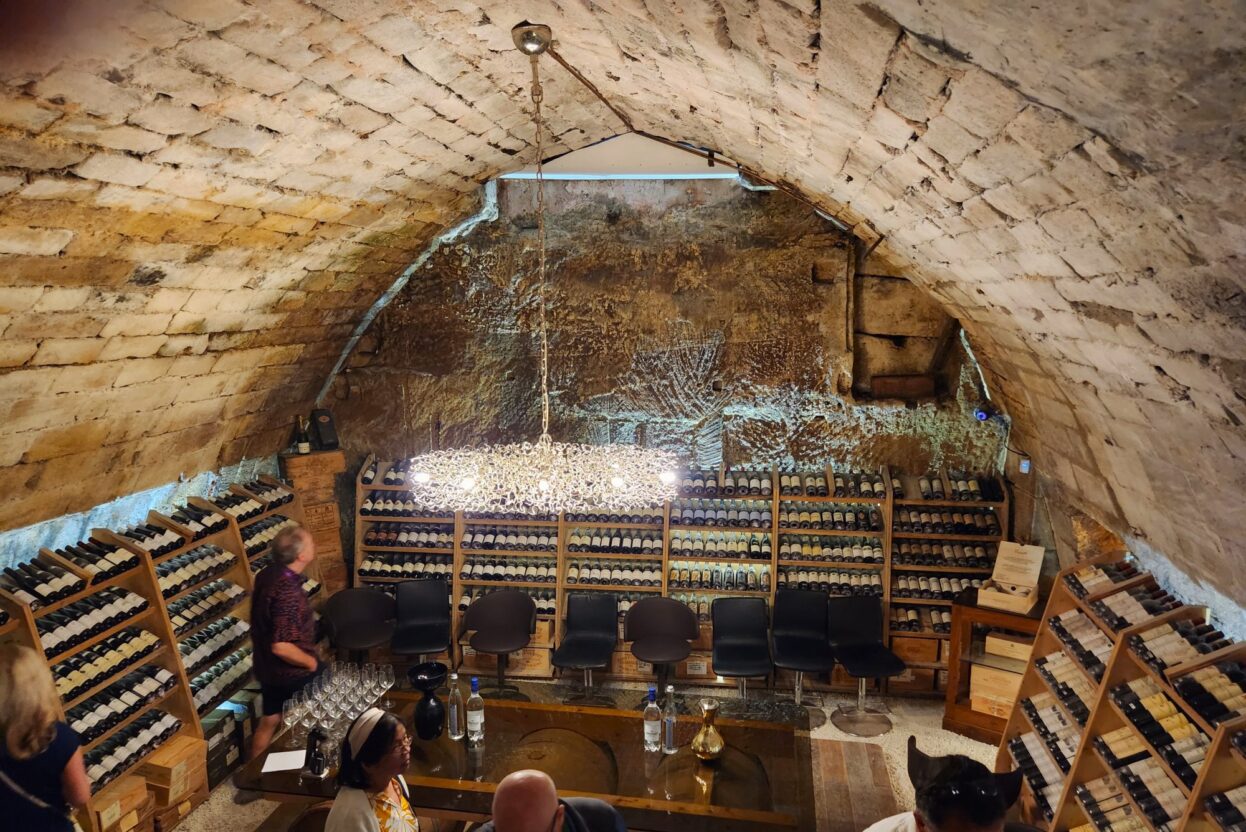
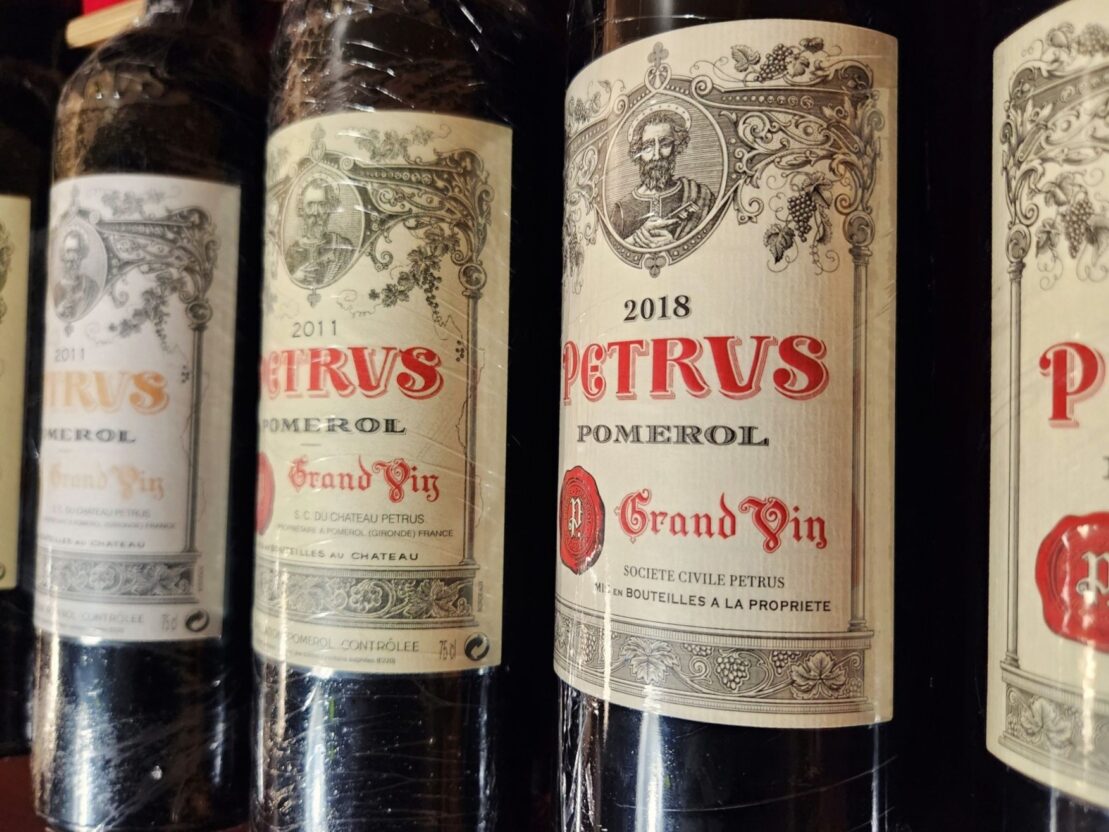
We tasted 5 wines, three from St. Emilion and two from Pomerol. They were really wonderful and our host, Ben, was exceptionally knowledgeable. ETS Martin will ship all wines purchased all over the world outside the European Union, duty free. Worth a stop, especially if you wish to ship wine.

We departed ETS Martin and St. Emilion to proceed to Graves and Lavoir at Caudalie. Owned by the Cathiard family who also own Château Smith Haut Lafitte. The fine cuisine restaurant, La Grand’Vigne has two stars in the Michelin Guide. We dined in the less formal outdoor setting called La Table du Lavoir.
Chef Nicolas Masse’s team provided a glorious al fresco experience with dishes packed with fresh organic produce from the estate’s gardens. Lunch was sublime, featuring a fresh peas soup, fresh goat cheese and fresh strawberries, followed by risotto with chard and hazelnuts and finished with local cheeses. Of course, it was all accompanied by several wines from the estate.
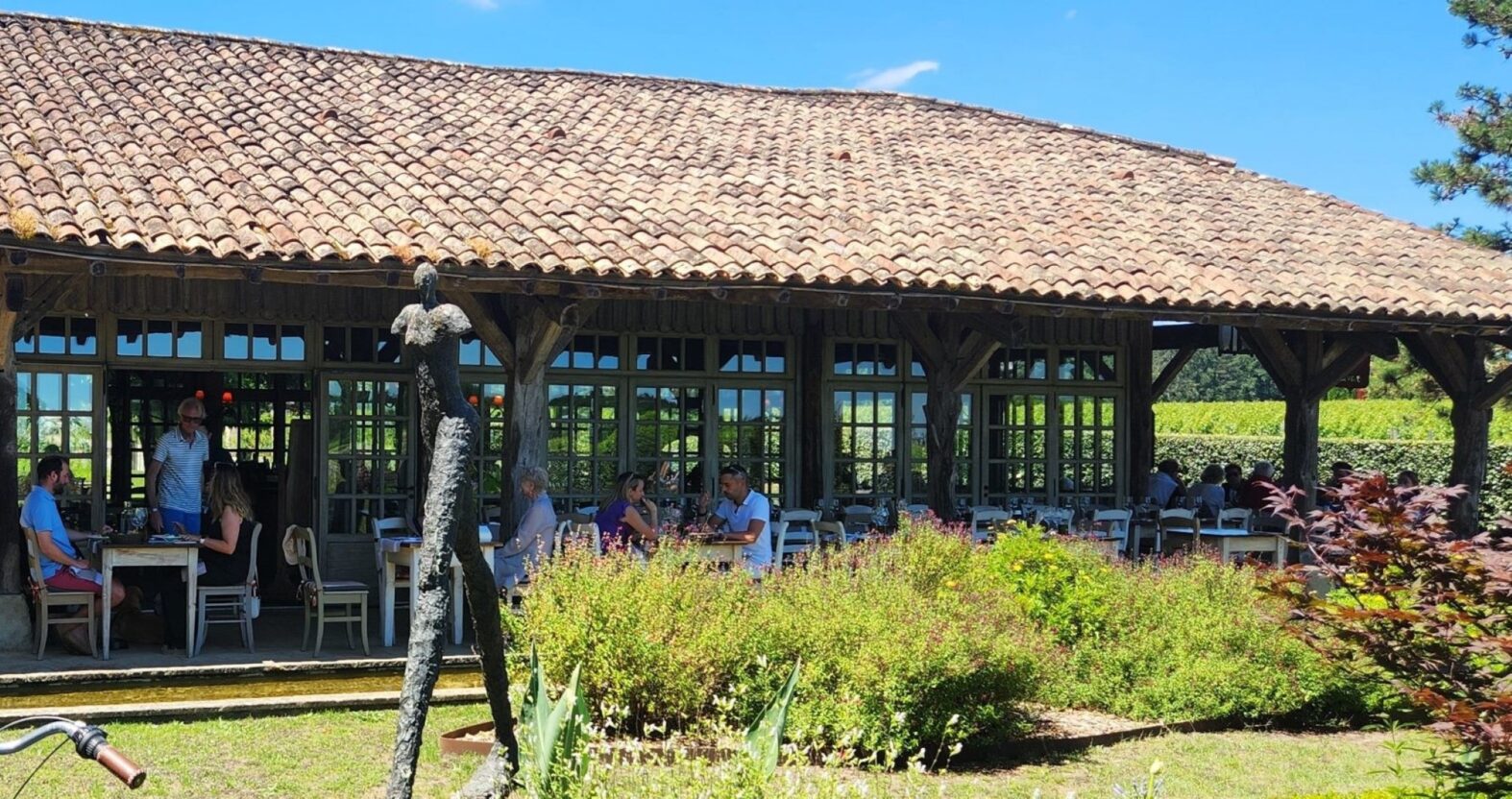

Daniel and Florence Cathiard are the current owners of Château Smith Haut Lafitte which dates back to the 14th Century. A Scotsman, George Smith, acquired the property in the mid-18th century and named it after himself. In 1990, the Cathiard’s acquired the Château and continue to maintain its history of excellence. We were surprised that Monsieur Daniel Cathiard was present to greet us when we arrived.
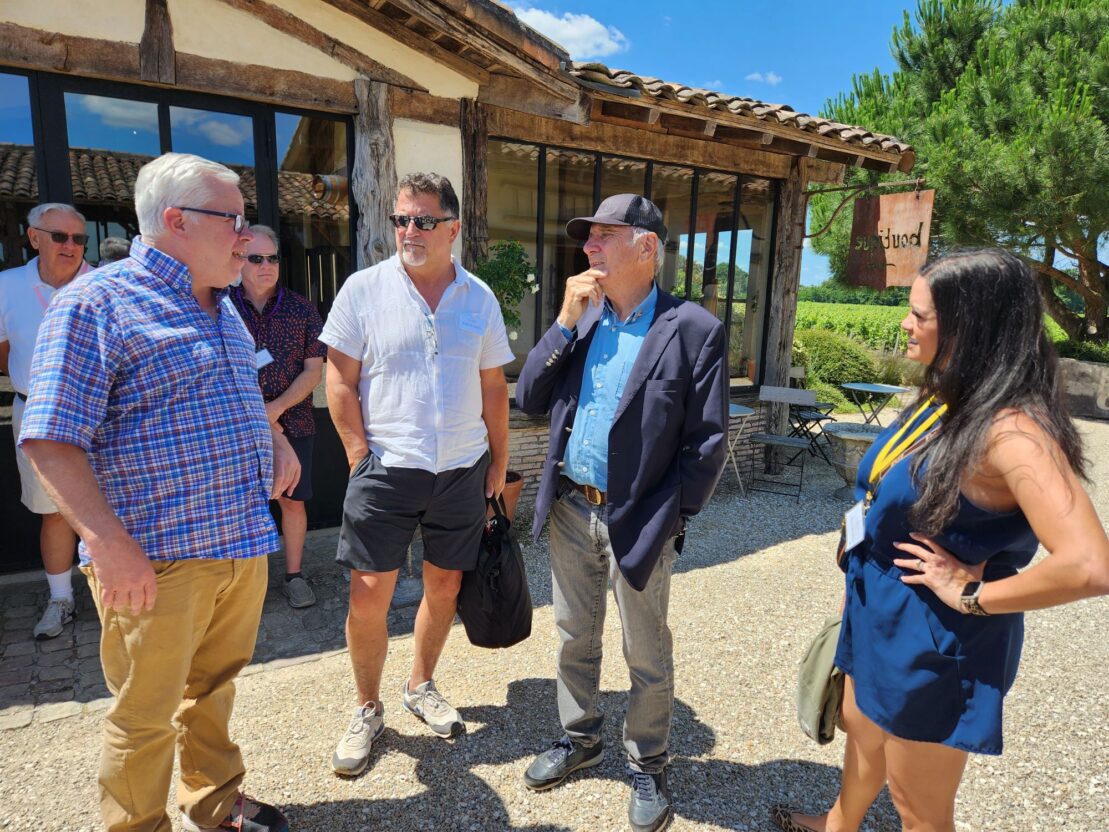
The facilities at Château Smith Haut Lafitte can only be characterized as stunningly beautiful in the traditional sense. Rich in history but very current in all aspects of wine making and wine storage. Just beautiful.
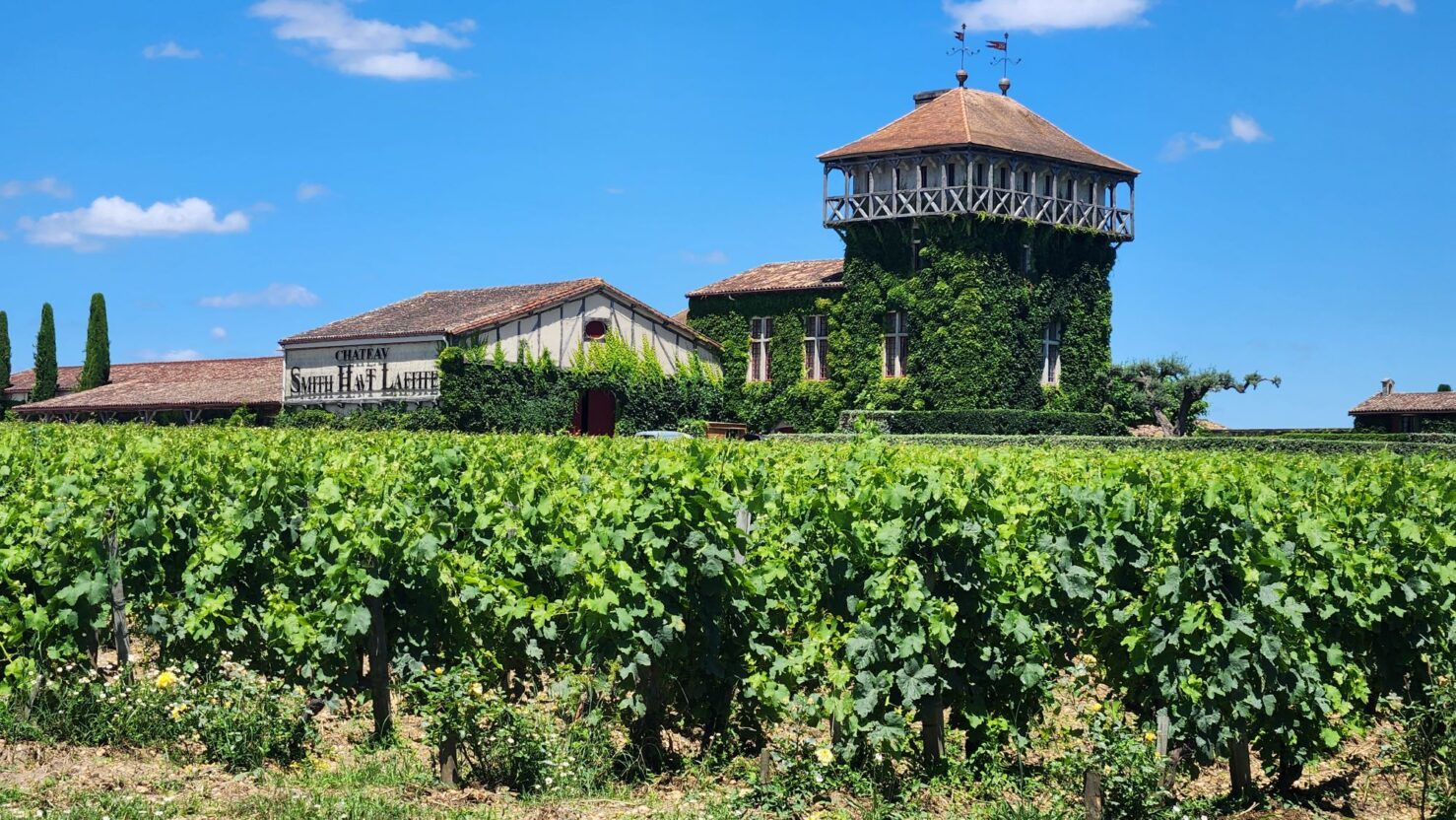
We tasted Château Smith Haut Lafitte and Château Le Thil Comte, their second Château, which is located less than 1 mile from Château Smith Haut Lafitte. The same technical team operates both Châteaux.

The Smith Haut presented cassis, plum puree and blackberry nuances with a finish like cashmere. The 2023 red is 70% Cabernet Sauvignon, 23% Merlot, 6% Cabernet Franc and 1% Petit Verdot. It is aged in 60% new oak.
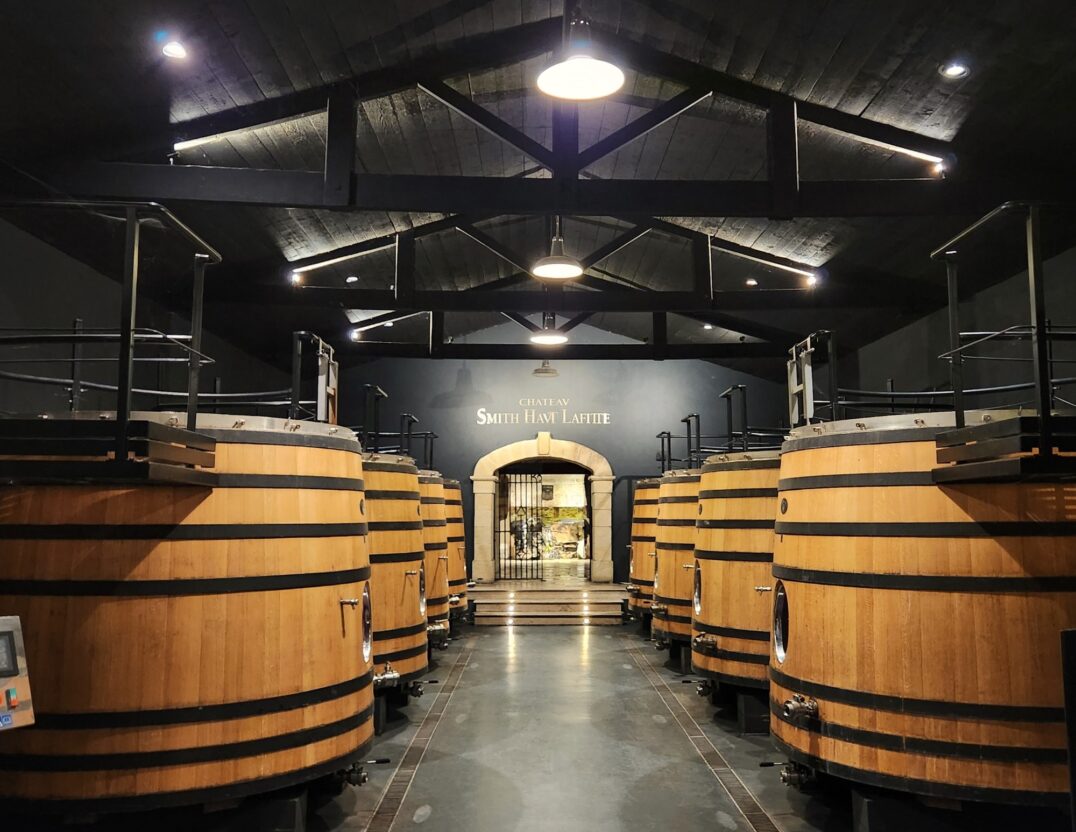

The Le Thil Comte is a blend of 95% Merlot and 5% Cabernet Franc, the deep garnet-purple colored 2018 le Thil prances out of the glass with cheery scents of ripe red and black plums, boysenberries and blackberry pie. Very yum!
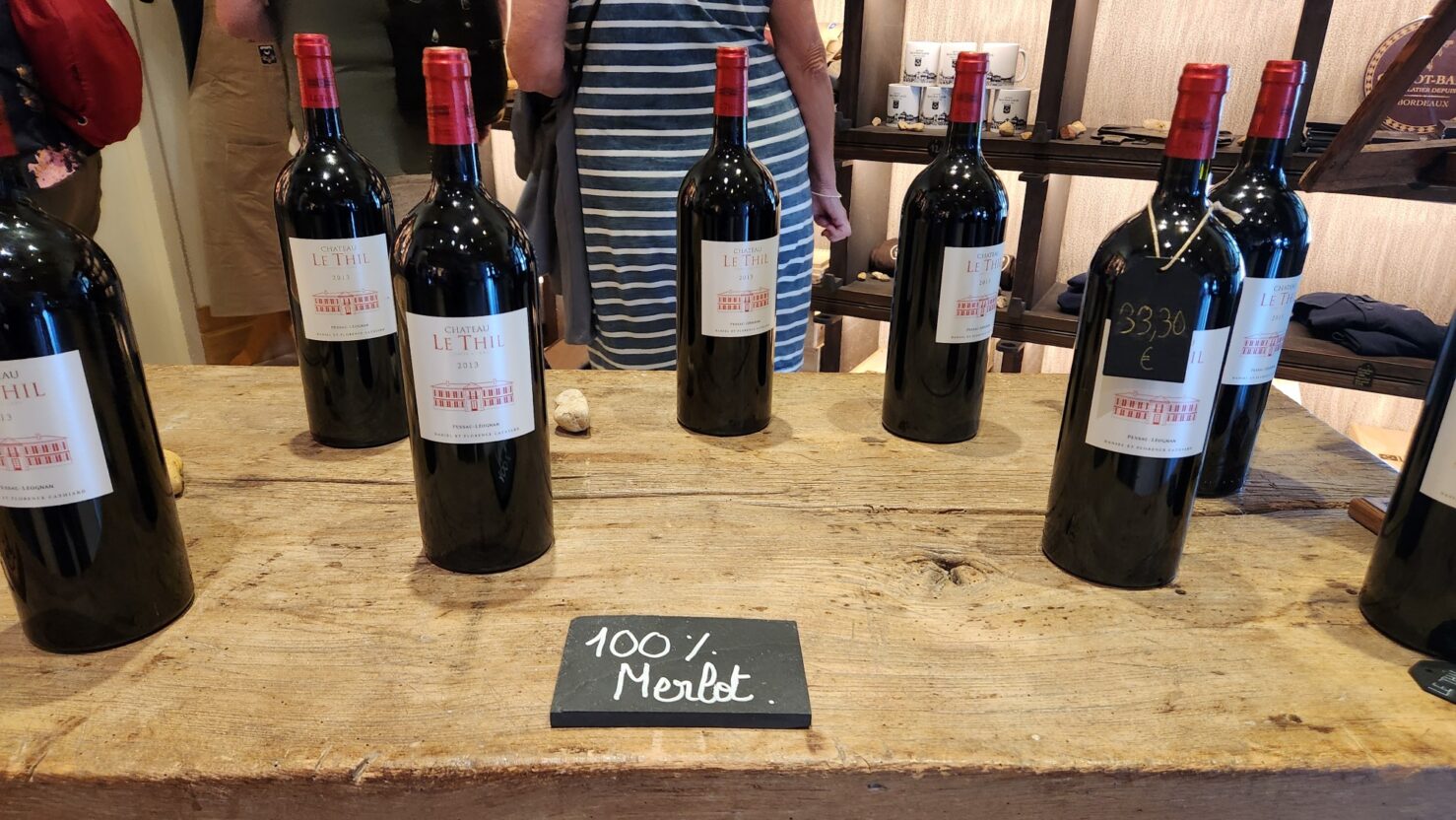
After a brief stop at our hotel, back in Bordeaux, we gathered at Brasserie Bordelaise in the Vaulted Cellar for dinner. Exhausted from our Day One activities, the relaxed atmosphere and dinner were a welcome respite. The dinner, like lunch, highlighted the regions fresh produce, more peas, fish, veal, pork and lamb. All delicious.

Of course, Kelly and Adam had several wines for us to taste complimenting the dinner and enhancing our wine education throughout. Delicious. Back to the hotel by 10:30pm to get ready for an early start. Time for some sleep.
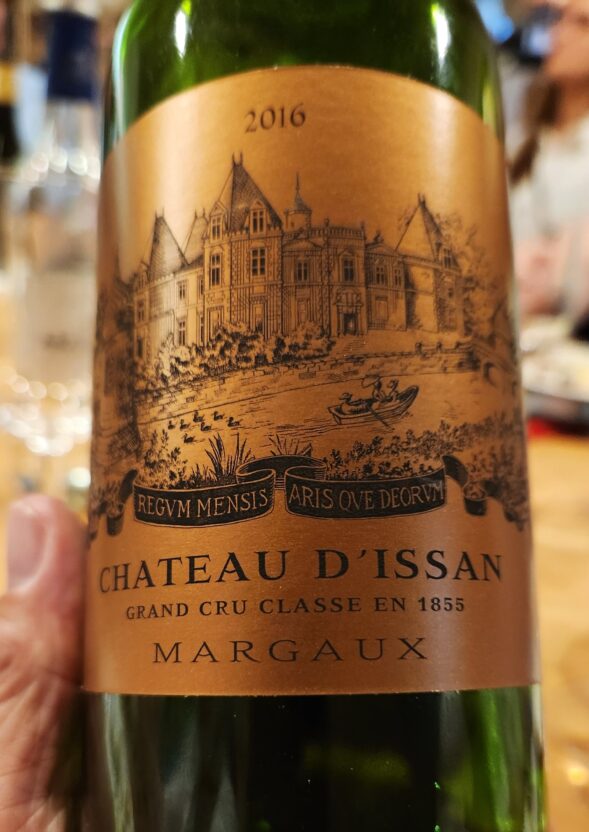
Our first evening and full day in Bordeaux gave promise that we were in for an amazing three more days of history delicious Bordeaux wines and fabulous regional cuisine.
Check back soon for PART DEUX where we will review our experiences at four châteaux in Pessac-Léognan, Saint-Julien and Pauillac.
Good job capturing the first day of this journey to Bordeaux. What a wonderful experience with Adam & Moret!!
Thanks for your editing assistance! 🙏👏❤️